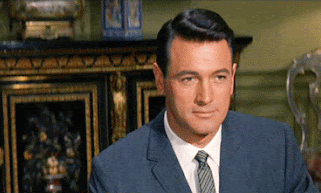On this, the longest night of the year, I want to wish each and every one of my readers a very happy winter solstice and may all your wishes for the next twelve months come true.
As the days have grown shorter and the shadows longer, my thoughts have returned to something I have often pondered over the years. Namely, what kind of religions and mythology would arise among an indigenous population on a world orbiting a double sun, especially in a system where the planet orbited outside the mutual orbit of the suns (thus keeping the suns in close proximity to each other in the sky) and the two stars were identical or close to identical in size, brightness, and other physical characteristics.

I can't help but think that their belief in soulmates would be profound, and how the merging of two entities into one would be paramount in their religion. As the two suns would appear to dance around each other and then periodically seem to merge into a single orb (in the relatively rare instances when everything lined up properly) during conjunction, I think it would create a belief system that prized cooperation over selfishness. Sex, coupling, and partnership would be praised and I think war would be a very alien concept to this race.
Furthermore, if the stars were of the same color, I'd go so far as to say that same-sex unions might be highly prized, moreso than if the stars were different colors. The different color argument could also be interpreted to implicitly bless mixed-race (if they had them) unions.
This double-sun scenario would also produce interesting physical effects on a very personal scale as well. Two suns would cast double shadows. If the suns were identical in color, perhaps these shadows would symbolize separate-but-connected aspect between the physical and spiritual aspect of life to these beings. If the suns were of different colors, perhaps it could just as easily symbolize the ying and yang, the good and evil dichotomy of life and how even those are connected, because the shadow cast by one sun would actually be tinted the color of the other sun.
If you threw a third sun into the system (most likely beyond the orbit of the planet itself, causing it to periodically travel into the planet's night sky), I think the beliefs and mythology would get even more interesting, because during part of the year it would appear to be rushing to join the pair of main suns, part of the year appearing to join in that dance, part of the year appearing to rush away from the pair of suns, and finally spending part of the year absent from the daylight sky altogether, "banished" as it were, to the night sky.
Then we have the altogether different arrangement from my forever-a-work-in-progress book, that takes place in a system whose main sun is so incredibly large and hot and luminous and the habitable zone surrounding it so huge that any life-sustaining worlds would have orbits (and therefore years) that would last hundreds—if not thousands—of Earthly years. In this scenario, the sun would not appear to move against the background of stars on a time scale that would be immediately apparent to a race at all. It would be as if our sun took twice a human lifetime just to pass through a single sign of the zodiac. And the same goes for observation of whatever other planets there might be (possibly dozens) in the system. Would early (i.e. non-telescopic) stargazers even recognize them as something different from the background stars?
And in this case, if the planet's own axis rotation did not have an appreciable wobble, seasons on this world would also last hundreds of years. A human could be born, grow old and die without ever seeing a change from winter to spring or spring to summer.
My book system is actually based on a real star: Rigel in the constellation Orion. Rigel is an incredibly hot and bright star, something like 40 times the size of our sun, 60,000 times as brilliant and lies anywhere from 600 to 900 light years from Earth, depending on who you talk to. We know it has a pair of companion stars, each of which is about five times the size of our sun that revolve around their own center of gravity, and together orbit the main star at about 50 times the distance between our sun and Pluto.
And if you want to take this mental exercise even further, consider this: While they could theoretically be present and part of the system, at this huge distance, even with a telescope we would be unable to detect stars the size and brightness of our own sun because of glare from the main star. (Even seeing that pair of huge companion stars is difficult with the largest telescopes.)
So this presents an interesting scenario in and of itself: in addition to the pair of giant suns orbiting supergiant Rigel, there may in fact, be sun-sized stars and planetary systems also in orbit around Rigel, much like Jupiter and Saturn have their own mini "solar systems" of moons surrounding them in our own system.
If this is indeed the case, the night skies on any worlds (whether they orbit the main star or the double companion or unseen sun-sized stars) would be incredible beyond our wildest dreams. If you throw into the mix the fact that Rigel is in the same neighborhood as a group of other huge, luminous blue-white stars (Orion's "belt" and "sword"), the night skies must be awesome.
